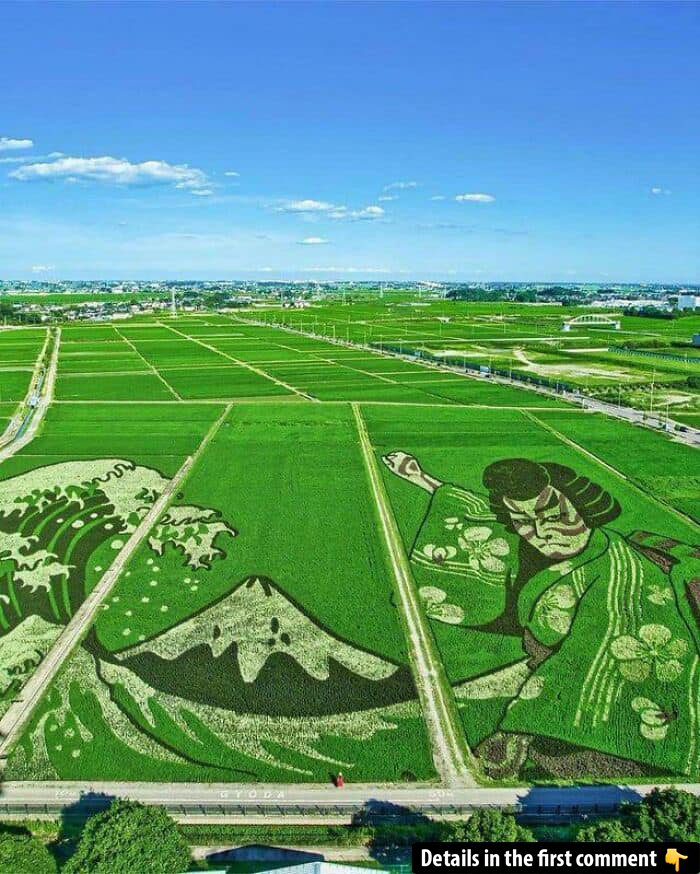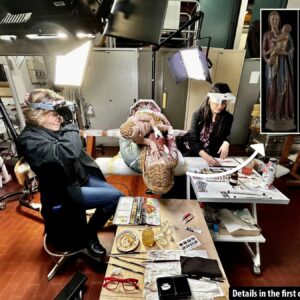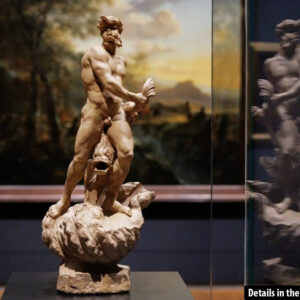In the quiet rural towns of Japan, art is not confined to galleries or museums—sometimes, it blooms in the very fields where rice has been cultivated for centuries. Rice paddy art, or tambo art, has emerged as one of Japan’s most unique and captivating artistic expressions, combining nature, culture, and innovation. What started as a creative solution to economic challenges has now blossomed into a world-renowned art form that is bringing life, tourists, and prosperity to rural communities. At the heart of this artistic revolution lies the vision of local communities and the collaboration of various art groups, whose contributions have turned rice paddies into vibrant canvases.
The Origin and Creation of Rice Paddy Art
Rice paddy art first appeared in the village of Inakadate in Aomori Prefecture during the early 1990s. Like many other rural towns in Japan, Inakadate had been facing significant challenges, including a shrinking population and the economic decline of local agriculture. As younger generations moved to urban areas in search of better job opportunities, these villages struggled to maintain their traditional ways of life.
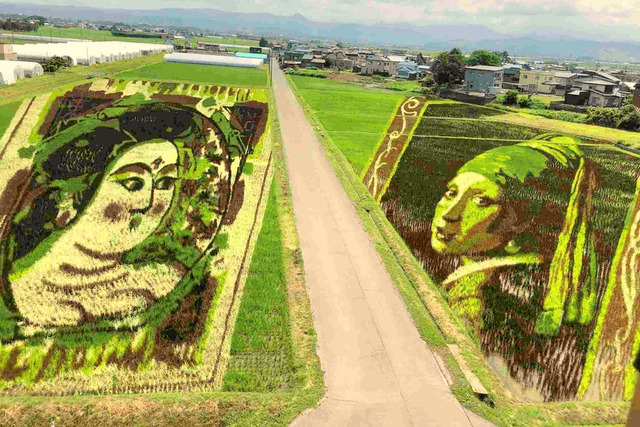
In the midst of these challenges, the idea of creating a new form of art arose. In 1993, Koichi Hanada, a town hall employee, conceived the idea of using rice to create large-scale works of art after observing children planting differently colored rice plants. What began as an experiment soon turned into a full-fledged community project. With the help of volunteers, the first rice paddy art installation depicted the image of Mount Iwaki, a nearby mountain. The project not only revived the community’s spirit but also attracted visitors, generating the much-needed revenue to support the town.
Video
Watch the video to discover how these stunning murals were grown from rice. It’s a unique fusion of art and agriculture you have to see to believe!
The Technique and Process Behind Rice Paddy Art
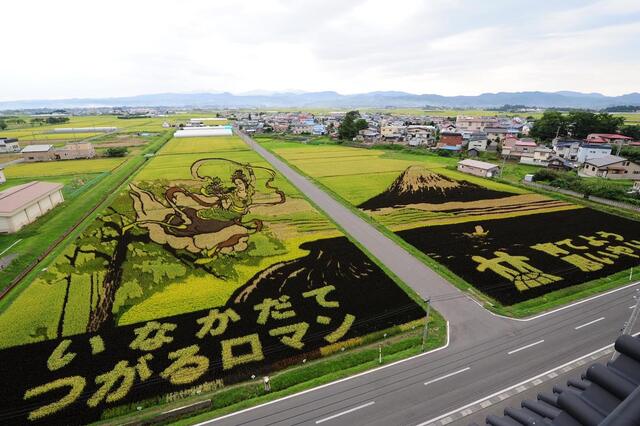
The process of creating rice paddy art is both meticulous and awe-inspiring. The key to this art form lies in the use of different strains of rice that come in various colors, such as white, red, yellow, purple, and green. The artists carefully plan the design using computer software, which allows them to map out the exact arrangement of the rice plants and ensure that the colors blend together seamlessly to form detailed images.
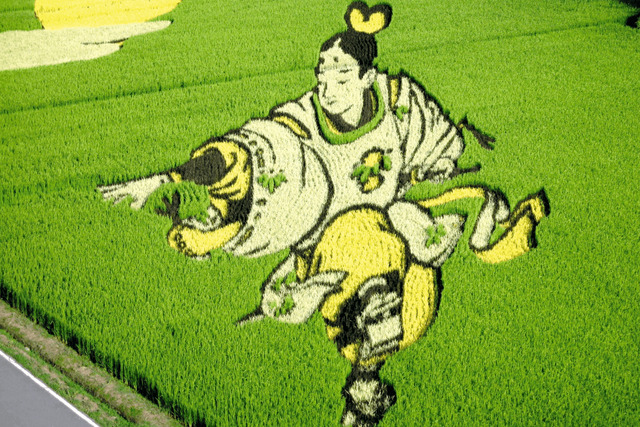
One of the challenges faced by the creators of rice paddy art is the physical nature of working with rice. In the early years, the art was created by planting the rice in traditional flooded fields, which made it difficult to create accurate images. Over time, the technique evolved with the use of upland rice strains, which do not require flooded fields. This not only made the planting process more manageable but also improved the clarity of the designs.
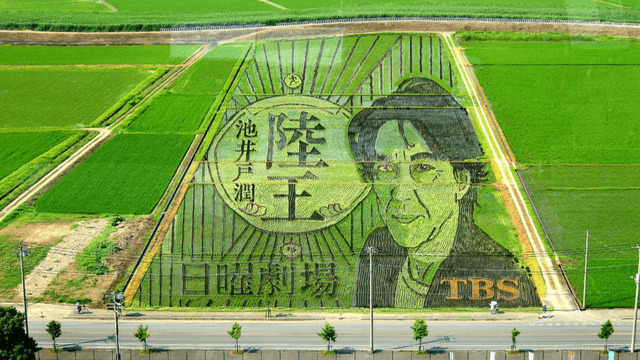
Once the plans were finalized, the community came together to plant the rice in the designated fields. Markers were placed throughout the paddy, each representing a specific color, and volunteers planted the rice according to the markers. The result is an expansive, living canvas that, when viewed from above, reveals stunning portraits, landscapes, and even homages to pop culture and history.
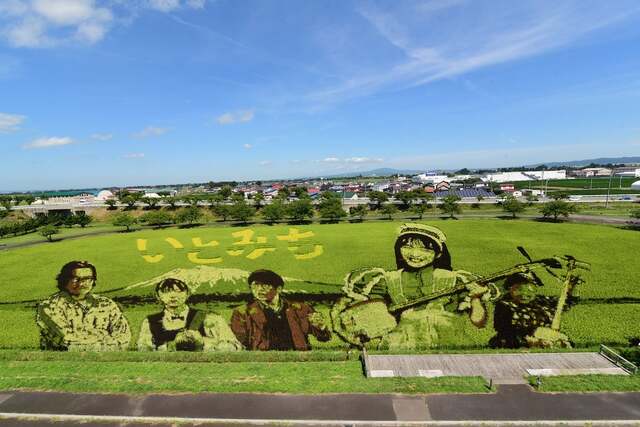
The Role of Art Groups in the Success of Rice Paddy Art
The success of rice paddy art would not have been possible without the collective efforts of local artists, community members, and dedicated art groups. Atsushi Yamamoto, a former high school teacher, played a pivotal role in refining the art form’s design process. His work allowed for the creation of more intricate and detailed images, thanks to his use of advanced design software and computer imaging techniques.

The involvement of local communities is another key aspect of the success of rice paddy art. What began as a small-scale experiment in Inakadate soon turned into an annual event with thousands of volunteers from the village and beyond coming together to create these stunning works of art. The active participation of the villagers fostered a sense of pride and ownership, transforming the project into a cultural symbol of the town.
As the project gained momentum, its popularity spread to other rural communities in Japan. Towns such as Asahikawa, Yonezawa, and Shibata followed Inakadate’s example, creating their own rice paddy art and contributing to the growing movement. The involvement of art groups in these towns has helped standardize and improve the quality of the work, ensuring that rice paddy art continues to evolve and captivate audiences around the world.
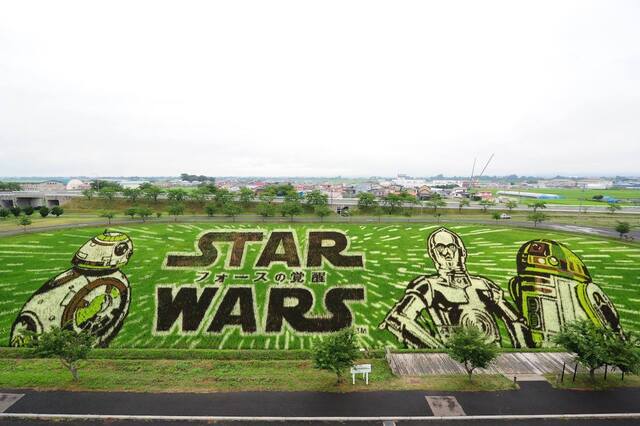
Impact on the Local Community and Rural Revitalization
One of the most significant outcomes of rice paddy art has been its positive impact on rural communities. Inakadate, which once struggled with a shrinking population and economic decline, has been able to reverse its fortunes, thanks in large part to the influx of tourists drawn to the rice paddy art installations. The town, once unknown to many, is now a thriving hub of culture and tourism.
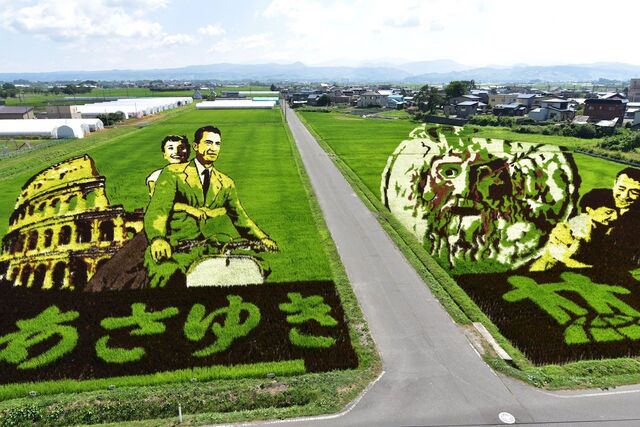
The economic boost from rice paddy art has been felt throughout the region. Inakadate raised enough money to build Tamboato Station, which serves as a vital point for visitors traveling to see the art. The village’s debt, which had once been a major concern, has been significantly reduced, and local businesses have flourished as a result of the increased tourism. Additionally, the success of rice paddy art has encouraged other towns to adopt similar practices, further spreading the economic benefits.
Beyond the financial impact, rice paddy art has also revived a sense of community and pride among the residents. It has given people a reason to return to their hometowns and has provided a new way for younger generations to connect with their cultural heritage. The collaborative effort of creating rice paddy art has strengthened social ties and helped preserve the unique traditions of rural Japan.
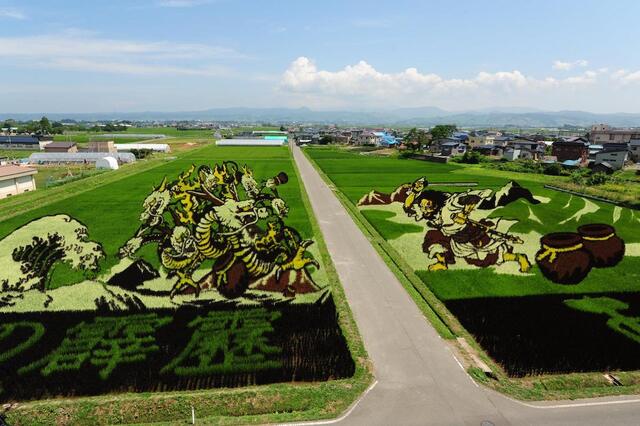
Global Recognition and Expanding Influence
What started as a small art project in a rural village has now gained international recognition. Rice paddy art has been featured in global media, attracting tourists from around the world who are eager to experience the unique art form in person. The art has become synonymous with Inakadate, and visitors travel to the village during the summer months to witness the stunning designs in full bloom.
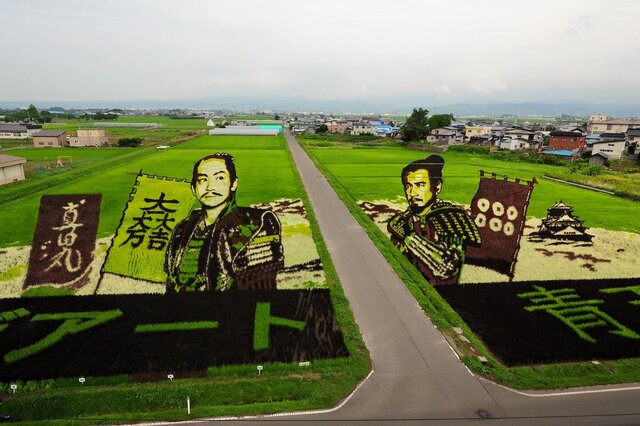
The influence of rice paddy art has extended beyond Japan’s borders. Countries such as South Korea and China have started to experiment with similar forms of art, and the concept of using agriculture as a medium for artistic expression is gaining popularity worldwide. The collaborative nature of rice paddy art has inspired other communities to adopt the practice, with some even integrating it into environmental sustainability efforts.
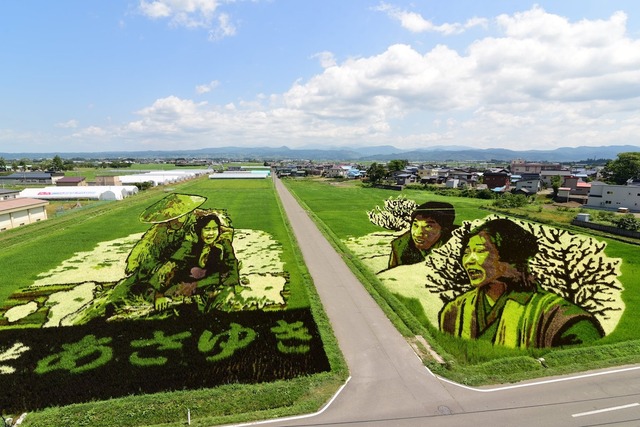
Challenges and Future of Rice Paddy Art
Despite its success, rice paddy art is not without its challenges. Environmental factors such as unpredictable weather patterns and soil conditions can affect the quality of the art. The careful maintenance and planning required to create these massive works of art also demand time and effort from both artists and volunteers. Additionally, as rice paddy art grows in popularity, there are concerns about the impact of mass tourism on the local environment.
Looking to the future, the rice paddy art movement continues to evolve. Plans to expand the art installations and increase the size of the fields are already in the works, with Inakadate considering new ways to involve local farmers and residents. The hope is to preserve the tradition of rice paddy art while ensuring its sustainability for future generations.
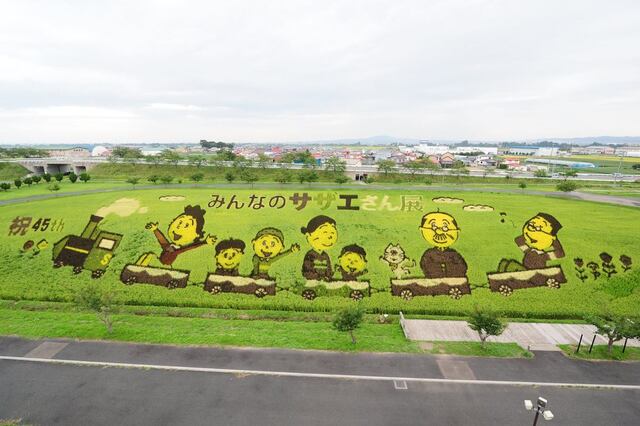
Conclusion
Rice paddy art has become more than just a way to beautify fields—it has revitalized entire communities, breathed new life into Japan’s rural economy, and provided a unique form of artistic expression that combines nature, technology, and culture. Through the collaborative efforts of local artists, volunteers, and art groups, rice paddy art has transformed from a creative solution to a thriving cultural phenomenon. As it continues to inspire communities worldwide, the future of rice paddy art remains as vibrant and dynamic as the fields it graces.
Video
Check out the video to see Piolo Pascual in the ABS-CBN Summer Station ID 2018, featuring beautiful rice paddy art. It’s a creative and visually stunning display!
